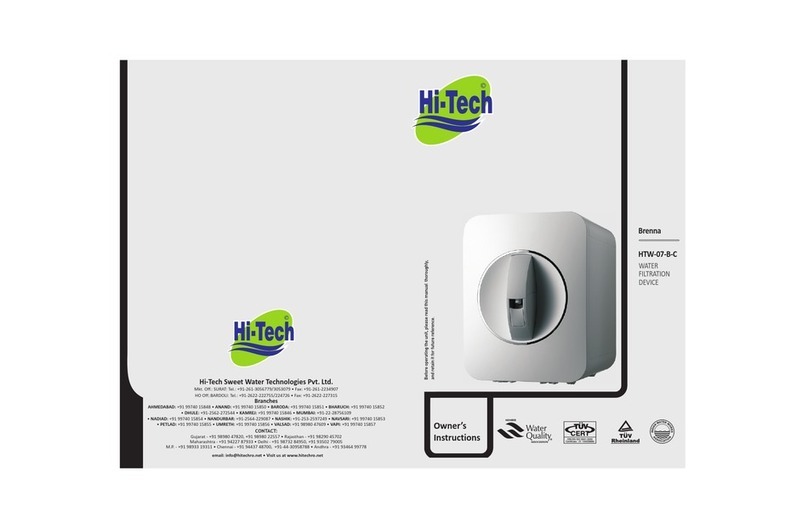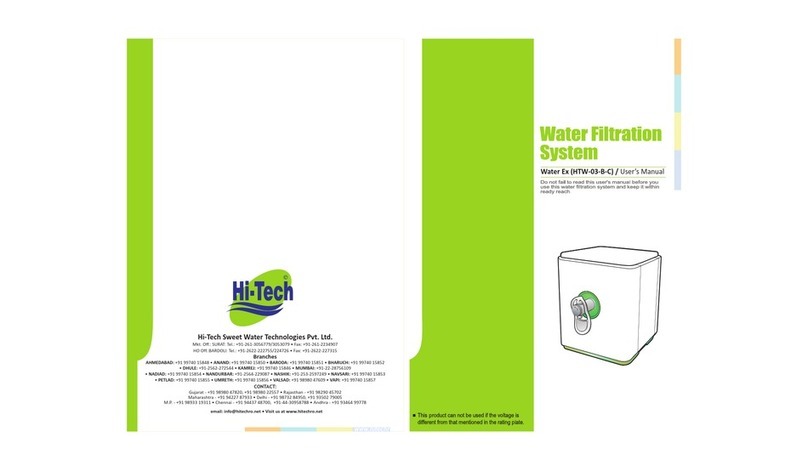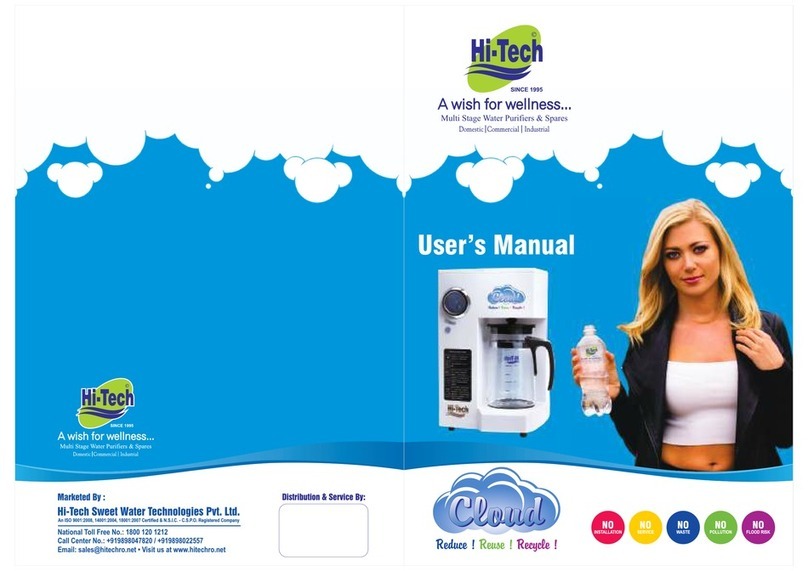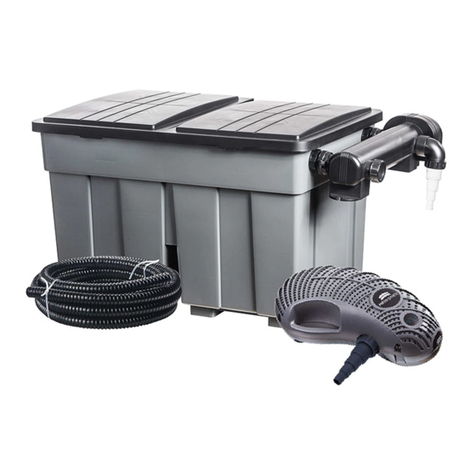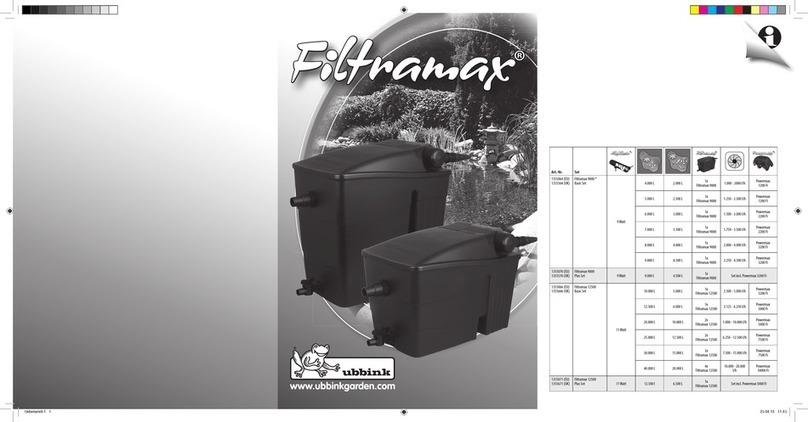1.0 DESCRIPTION
1.1 General Information
Your reverse osmosis (RO) machine is a durable piece of equipment which, with proper care,
will last for many years. This instruction manual outlines operating and maintenance details
vital to the sustained performance of your RO unit.
0 0
Your RO machine indicates the permeate and concentrate rates at 77 F (25 C) per 2000 mg/L
feed concentration and 30 psig (2.1 bar) feed pressure. The machine runs at approximately
175 psig (15.2 bar) operating pressure except where lower pressures are advised because of
the type of membrane used.
Recoveries are set depending on the water analysis for each machine. Recoveries for these
machines are generally set between 33-50% . If your unit is altered at the site or if the feed
water changes.
When new membrane are installed in the RO machine, the customer must be certain that the
recovery of permeate as a percentage of the feed rate is the same as the original machine.
This means that if the permeate flow rate is higher than that specified, the concentrate flow
rate must be increased so that the ratio of permeate flow rate to the concentrate flow rate is
the same as on the original machine. The concentrate flow rate can be increased by opening
the concentrate valve slightly. However, it is suggested that the customer purchase a
replacement valve steam from Hi-Tech which will allow the valve to be closed and still give an
adequate concentrate flow rate.
NOTE: In order to maintain warranty, an operating log must be maintained. Copies can be
sent to Hi-Tech for review. Extra log sheets are available upon request.
1.2 What is Reverse Osmosis ?
RO is the removal of ionic, organic and suspended impurities from water by the use of a
membrane. Unlike conventional filtration, RO separates the feed water stream into two
streams. The semipermeable RO membrane, under pressure, allow the passage of the
purified water (permeate) while rejecting the dissolved or suspended solids in a
concentrated stream. Several operating definitions are useful to further understand how
your machine functions:
FEED WATER: The incoming water stream that is to be treated by the RO machine.
PERMEATE: the purified water stream that has passed through the membrane.
WASTE WATER: the flow of water used to wash or clean the membrane; this stream
contains the impurities rejected by the membrane and flow to the drain.
RECOVERY: the amount of permeate that is "recovered" from the feed water
stream; your machine is designed to recover 33-50% of the feed water
stream.
% REJECTION: the percentage of dissolved ions "rejected" by the RO membrane’
performance.






